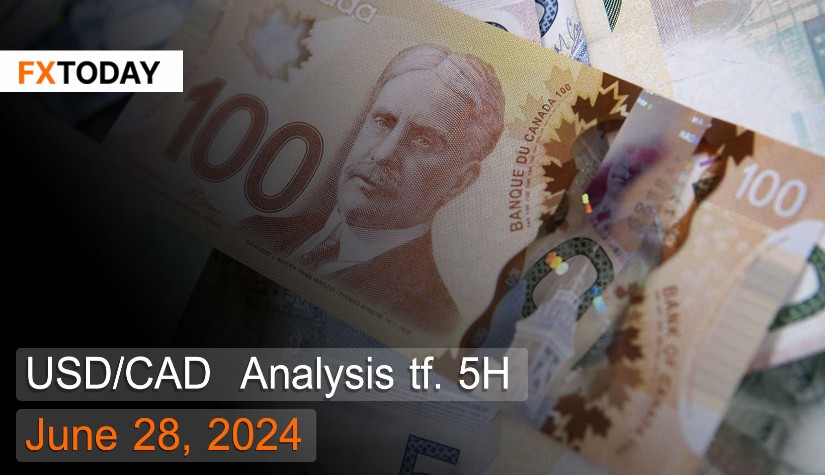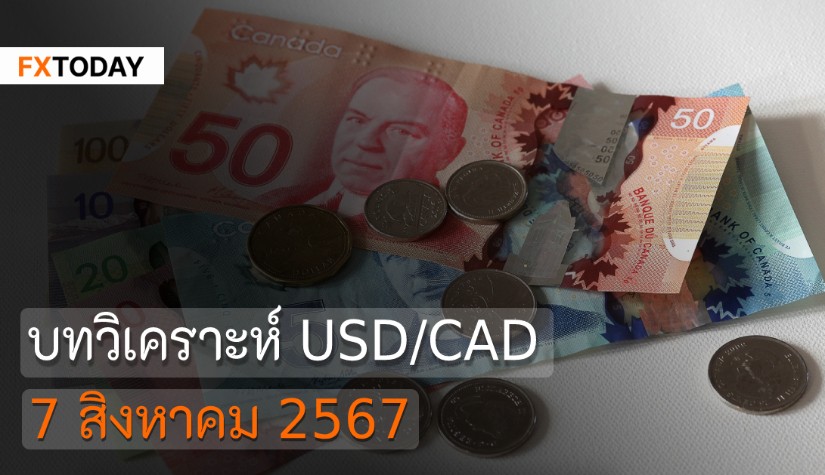The Canadian economy may slow down soon.
The Canadian dollar has been continuously weakening following the announcement of the U.S. PCE figures, which decreased to 0.1% month-on-month. Additionally, higher-than-expected inflation in May has led U.S. policymakers to be more cautious about cutting interest rates this year, highlighting the disparity in policy rates between central banks, significantly strengthening the U.S. dollar.
The CFIB Business Barometer Index in Canada, a long-term index reflecting business performance expectations over the next 12 months in the country, fell to 56.3 in June. This is close to its peak again, primarily supported by increased long-term confidence. The service sector remains crucial, with the highest increase in confidence. The average wage increase plan for the next 12 months dropped to 2.5%, indicating companies' efforts to reduce costs.
Inflation in Canada surged to 2.9% year-on-year in May from a three-year low of 2.7%. This inflation rate aligns with the Bank of Canada's forecast that inflation will remain close to 3% in the first half of the year. However, this inflation rise may delay the Bank of Canada's rate cuts. Inflation was mainly driven by a nearly 3.5% increase in transportation costs, while food inflation rose by 2.4% amid higher food production costs, which is another significant driver.
Retail sales in Canada fell by 0.6% month-on-month in May, the fastest decline since March. Purchases at rest stops slightly decreased due to higher product prices, slowing down sales volumes. Additionally, higher transportation costs may keep product prices rising.
The 10-year Canadian government bond yield surged above 3.4%, recovering from a five-month low due to higher inflation, leading investors to predict that the Bank of Canada will delay interest rate cuts in Q3. This recovery also follows the rise in U.S. government bond yields after the PCE announcement, a crucial factor in the U.S. interest rate cuts.
Techical analysis data (5H)
Resistance: 1.3721, 1.3737, 1.3754
Source: Investing.com
Buy/Long 1: If the price touches support in the price range of 1.3671 - 1.3688 but cannot break the support at 1.3688, you may set a TP at approximately 1.3737 and SL at around 1.3655 or according to your acceptable risk.
Buy/Long 2: If the price breaks the resistance in the price range of 1.3721 - 1.3737, you may set a TP at approximately 1.3754 and SL at around 1.3671 or according to your acceptable risk.
Sell/Short 1: If the price touches resistance in the price range of 1.3721 - 1.3737 but cannot break the resistance at 1.3721, you may set a TP at approximately 1.3671 and SL at around 1.3754 or according to your acceptable risk.
Sell/Short 2: If the price breaks the support in the price range of 1.3671 - 1.3688, you may set a TP at approximately 1.3655 and SL at around 1.3737 or according to your acceptable risk.
Pivot point June 28, 2024 09:02 PM. GMT+7
|
Name
|
S3
|
S2
|
S1
|
Pivot Points
|
R1
|
R2
|
R3
|
| Classic | 1.3655 | 1.3671 | 1.3688 | 1.3704 | 1.3721 | 1.3737 | 1.3754 |
| Fibonacci | 1.3671 | 1.3684 | 1.3691 | 1.3704 | 1.3717 | 1.3724 | 1.3737 |
| Camarilla | 1.3696 | 1.3699 | 1.3702 | 1.3704 | 1.3708 | 1.3711 | 1.3714 |
| Woodie's | 1.3655 | 1.3671 | 1.3688 | 1.3704 | 1.3721 | 1.3737 | 1.3754 |
| DeMark's | - | - | 1.368 | 1.37 | 1.3712 | - | - |
















